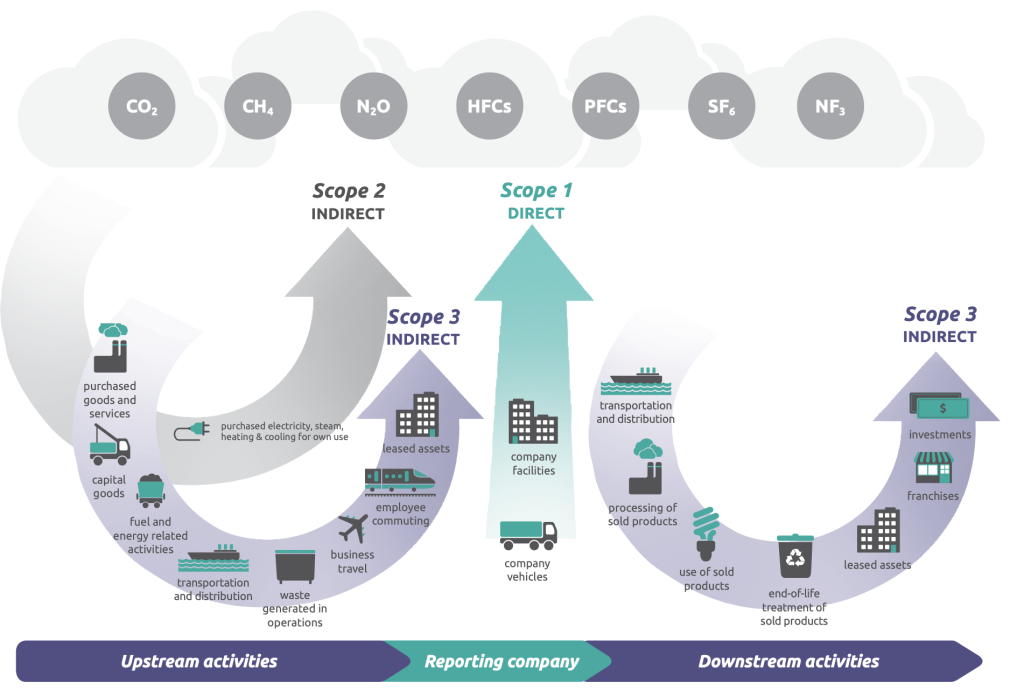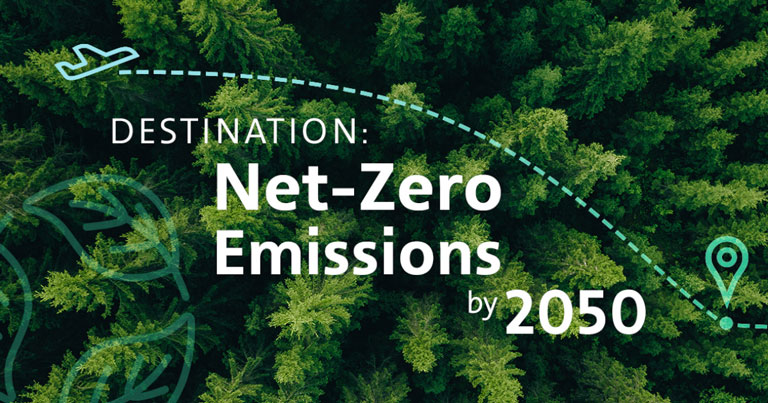The GHG Protocol is a widely used international standard for classifying greenhouse gas emissions. It defines emissions in three categories, known as Scope 1, Scope 2, and Scope 3.

Scope 1 and Scope 2 emissions come from owned or purchased assets that are directly involved in an organization’s operations.
Scope 1 emissions cover direct greenhouse gas emissions emerging from owned sources such as company vehicles, combustion appliances or equipment, and fugitive emissions, which are emissions caused by leaks, malfunctions, and other irregular or accidental circumstances.
Scope 2 emissions differ from the Scope 1 classification in that they are indirect rather than direct, but still come from owned, purchased, or rented assets. Utilities such as electricity and heat are common examples of Scope 2 pollutants.
Scope 3 indirect emissions cover all non-direct sources that come from peripheral activities related to the organization. These include emissions resulting from goods and services delivered through an outside provider, as well as waste disposal, investments, product distribution, franchises, and leased assets.
If your business is committed to achieving zero actual carbon emissions by 2050, there is a lot to do to reach scope 3.
Your goal should already include in scope 1 emissions (direct emissions from sources owned or controlled by your company, including emissions from your fleet of vehicles and your power plants) and scope 2 emissions (indirect emissions from purchased electricity), but not scope 3 emissions.
Scope 3 emissions are indirect emissions that occur because of your company’s operations, but from sources not owned or controlled by your company.
Scope 3 emissions categories include:
- purchased goods and services
- capital goods
- fuel- and energy-related activities
- upstream transportation and distribution
- waste generated in operations
- business travel
- employee commuting
- upstream leased assets
- downstream transportation and distribution
- processing of sold products
- use of sold products
- end of life treatment of sold products
- downstream leased assets
- franchises
- investments
Data for scope 3 emissions can be difficult to obtain, so quantifying scope 3 emissions is not as straightforward as it can be for scopes 1 and 2. Your company will have to gather the best information possible about scope 3 emissions to begin addressing this significant part of your carbon footprint.
You will have to start to track these categories to fully understand what’s hidden within scope 3 emissions and most likely you lack a lot of information to fully understand the full scope.
Scope 3 Calculation Guidance – Greenhouse Gas Protocol
You can find a full guidance on how to calculate the Scope 3 in an easy way here!
You can also undergo a Scope 3 online course and get access to standards for e.g. accounting to get the data you need.
Under supported documents you will find guides to each of the categories mentioned above.






